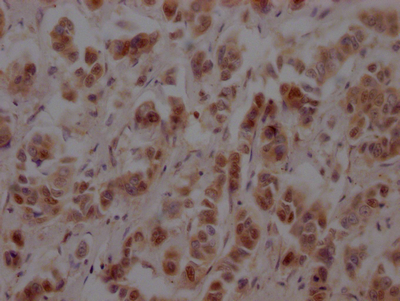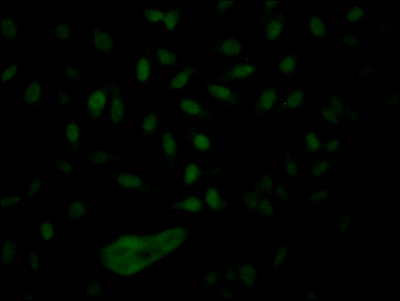NUP153 is essential for the recruitment of TPR during the construction of the postmitotic nuclear pore complex (NPC) but is dispensable for the anchoring of TPR that has already been localized within the assembled nuclear pore. NUP50 is reliant on NUP153, as its depletion leads NUP50 to be ejected from the NPC. NUP153 depletion caused early differentiation in human ESCs, and it was discovered to be important in silencing the developmental gene without affecting nucleocytoplasmic transport. NUP153 interacts with the transcription factor Sox2 and is downregulated during neural progenitor cell development into neurons. NUP153 not only interacts with Sox2 in neuronal development and cell proliferation, but it also interacts with and co-regulates other genes, implying that it may play a role in neural fate determination.
The recombinant NUP153 antibody is a monoclonal antibody molecule expressed by using recombinant DNA and protein engineering technology to clone the genes encoding the NUP153 antibody into a plasma vector and then by transfecting the vector clone into the appropriate recipient mammalian cells for production. It was purified using Affinity-chromatography. And it shows reactivity with NUP153 protein from Human. This recombinant NUP153 antibody can be used in the ELISA, IHC, IF.







